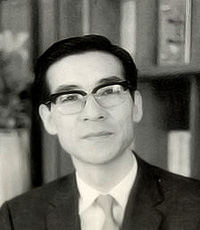Japanese Pioneers
Masaharu Aoki

Masaharu Aoki was born in Tokyo in 1922. He graduated from the Faculty of Science at Tohoku University in 1946. He became a lecturer at the Department of Applied Physics in the Faculty of Engineering at the University of Tokyo in 1955, and a professor at the same university (in the Electrical Engineering Department) in 1963. He became president of the Japan Society of Applied Physics in 1978 and a member of the Science Council of Japan in 1981. After retiring from the University of Tokyo in 1982, he became a professor at the Tokyo University of Science. He was awarded the Order of the Sacred Treasure, third class, in 1991.
Soon after the end of the Second World War, he started his career as a researcher in the semiconductor field, working on selenium rectifiers among other things. After launching a study of thermoelectric phenomena in semiconductors in around 1954, he played a leading role in fundamental research related to thermoelectric cooling by the Peltier effect and its practical applications. He strongly contributed to development and commercialization in this field, with considerable achievements in selecting materials for thermoelectric elements, creating thermoelectric devices and thermoelectric panels, etc.
Later, in the Department of Electronic Engineering at the University of Tokyo, his studies came to be focused on compound semiconductors such as those made from group-III-V or group-II-VI elements, leading to pioneering results in the field of light-emitting materials. In 1970, he became the first person in Japan to succeed in creating single-crystal GaN, and reported on its characteristic blue emissions. His research has been highly appraised as the wellspring of subsequent studies of blue light-emitting diodes.
These research accomplishments led to his receiving the Tanba–Takayanagi Award for Significant Performance in 1973 and the Outstanding Contribution award from the Institute of Television Engineers of Japan in 1979. He also earned the Tokyo Metropolitan Award for Invention and Research Contributions in 1975.


